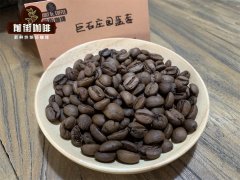Will the coffee treated by honey and anaerobic treatment surpass the washing method in Central America?
For decades, Central American and Mexican classic washed or wet-processed coffee has become one of the most popular coffee types in the world. It usually tastes clean, usually sweet and sour, with a range of changing fruit flavors-always stone fruit, usually some citrus and flowers, nuts and caramel to rich dark chocolate, depending on coffee and roasting.
Most likely some aromatic wood, ranging from the sweet acrid smell of freshly cut cedar to darker roasted charred pine. Details may vary depending on farm or origin-Panama is known for a clean, softer version of this type, Costa Rica coffee for an equally clean but brighter, stronger version, Guatemala coffee is deeper and more special, not always so clean, perhaps, but can bring unexpected sensory surprises due to local variations in less predictable coffee varieties and processing methods. El Salvador: Due to the extensive cultivation and lower growing elevation of the classic bourbon variety, the style of this variety is slightly lighter, but the melody and complexity are slightly higher, compared to Costa Rica and others.

Not only do these types often appear as single origins on specialty coffee roasters 'menus, but they also contribute to one of the three pillars of the period's standard "all-Arabica" blend-the body and strength of Colombia coffee, the softened nuts and chocolate of Brazilian coffee, and the center of the brisk and lyrical elevator.
Among some coffee drinkers, the classic Central profile remains the archetypal taste of coffee. Coffee similarities and their relatively subtle differences between Central American coffee types all come from the same source. The similarities are due to similar processing methods (removing fruit by fermentation and washing before drying the beans) and similar tree varieties (all ultimately derived from some trees brought to the rest of the world from Yemen in the early 18th century). What's the difference? Variations in processing details and differences between closely related tree species: Costa Rica's firm, straightforward Caturra, El Salvador's more complex and varied bourbon, for example.
Different approaches cannot surpass the classics
Those who have followed the premium boutique coffee market over the past decade know roughly what happened to change all that. Above all, there is a distinctive and striking new enthusiasm for professional roasters and their clients: we want Ethiopia because they are more floral and fruity than those of the average old Central Cafe. Want dried coffee or naturally processed coffee because they are bulky, fruity and often alcoholic. Coffee processed with honey is wanted because they taste different, while "anaerobic" coffee fermented in anoxic tanks and bags tastes more different.
This trend towards cup differentiation is driven by historical fortuitous factors: for example, the rediscovery of the extraordinary geisha variety planted in Panama in 2004. Real Panamanian geisha make a classic Central American cup made from familiar varieties of trees grown in Central America such as Typica, Caturra and even bourbon that tastes a bit like a coffee version of Budweiser or an opening wine. Then, add all the new processed wrinkles-natural, honey treated, etc. -to the already distinct geisha and you have a range of almost calculated coffee expressions that make the classic Central American wash cup look, well, memorable.
Important Notice :
前街咖啡 FrontStreet Coffee has moved to new addredd:
FrontStreet Coffee Address: 315,Donghua East Road,GuangZhou
Tel:020 38364473
- Prev

What's the difference between coffee powder and whole bean coffee? Advantages and disadvantages of coffee powder and coffee beans
You can buy coffee in one of two ways: whole beans or pre-ground coffee beans. But what's the difference? which is better? Is the whole bean tastier than ground? Is ground coffee cheaper? Qianjie Coffee delves into the difference between ground coffee and whole bean coffee so that you can decide which form of coffee is the best. What is whole bean coffee? When buying whole bean coffee, buy
- Next

The difference between the mellow thickness of espresso and the alcohol thickness of hand-brewed coffee
When describing coffee, people often use terms such as light, heavy and smooth. These are used to explain the expression of the body or taste of coffee. Mellow is one of the main characteristics of coffee. Mellow or mouthfeel refers to the heaviness, rich touch or thick feeling when you sip coffee near your mouth. It also describes texture: oily, buttery, thin, etc. The ratio of quoting wine again
Related
- What brand of black coffee is the most authentic and delicious? what are the characteristics of the flavor of the authentic Rose Summer Black Coffee?
- Introduction to the principle and characteristics of the correct use of mocha pot A detailed course of mocha pot brewing coffee is described in five steps.
- Which is better, decaf or regular coffee? how is decaf made?
- How much is a bag of four cat coffee?
- How about four Cat Coffee or Nestle Coffee? why is it a cheap scam?
- Which is better, Yunnan four Cats Coffee or Nestle Coffee? How about cat coffee? is it a fake scam? why is it so cheap?
- How about Cat Coffee? what grade is a hoax? which instant coffee tastes better, four Cat Coffee, Nestle Coffee or G7 coffee?
- Process flow chart of coffee making-Starbucks coffee making process what coffee tastes good at Starbucks
- The top ten best coffee beans in the world Rose summer coffee or Tanzanian coffee tastes good
- Yunnan four cat coffee is good to drink?_four cat coffee is a big brand? four cat blue mountain coffee is fake?

